It’s important to know about the bad catalytic converter symptoms so that you can spot them immediately and take the vehicle to a servicing shop for maintenance.
Contents
What Are Bad Catalytic Converter Symptoms?
The catalytic converter is a key component of the exhaust system of a car: It changes some properties of the harmful gasses which are produced when running the engine. As a result, the emitted gasses make a less damaging impact on the environment.
A broken catalytic converter is not uncommon at all. Any external impact such as debris on the road or overheating of the engine’s internal components can affect it. Let’s learn about some catalytic converter symptoms with Car From Japan.
1. Engine Misfiring
The catalytic converter can overheat and show signs of failing when the engine misfires. And it is the first symptom of a bad catalytic converter. An extremely rich fuel mixture causes ignition by making raw fuel enter the converter. The condition is dangerous since it can melt the catalyst components.
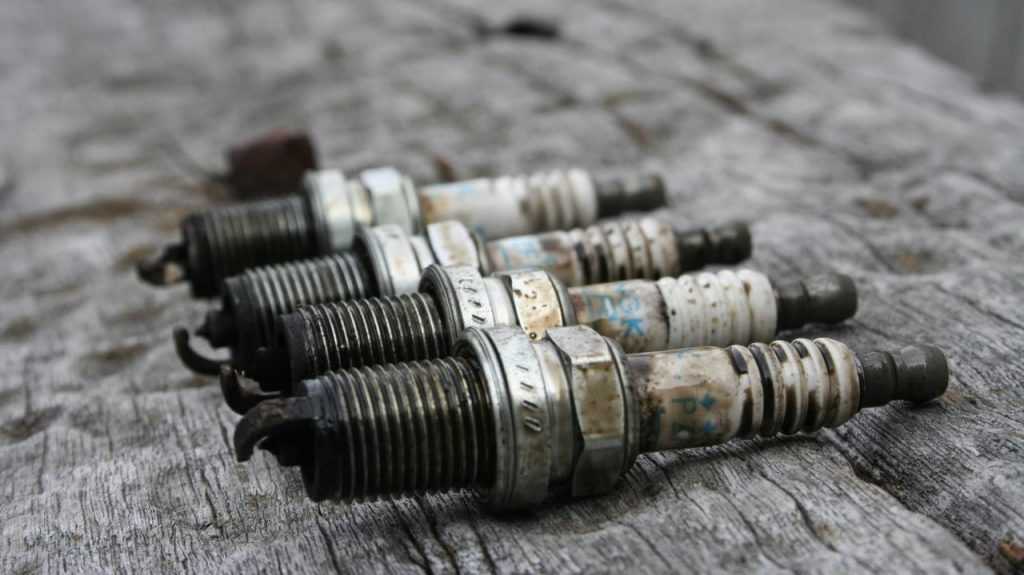
2. Loss of Power When Accelerating
Losing power during acceleration or going uphill is one of the most common clogged catalytic converter symptoms. Mechanics often misdiagnose this cause, especially in case of partial clogging, and suggest changing of a few components, which is unnecessary.

You can be sure about this problem by applying a simple test. Apart from the obvious low-powered acceleration, you can check the exhaust with your hand.
Ask an assistant to hold the car’s rpm at between 1800 and 2000 while you will check the exhaust push with your hand from behind the tailpipe. If you get a hot feeling of exhaust flow, the converter is definitely clogged.
3. Degraded Performance
An overall degradation in the engine performance is another sign. It happens because of the back pressure that the failing converter creates, affecting the engine and preventing it from running freely. It makes your car shake and the sudden burst of pressure can sometimes stall the engine too while you are driving.
4. Reduced Exhaust System Performance
Another way to notice bad catalytic converter symptoms is to keep an eye on the exhaust system’s performance. It will degrade if the converter is failing and the problem can be traced back to an error in the fuel system.
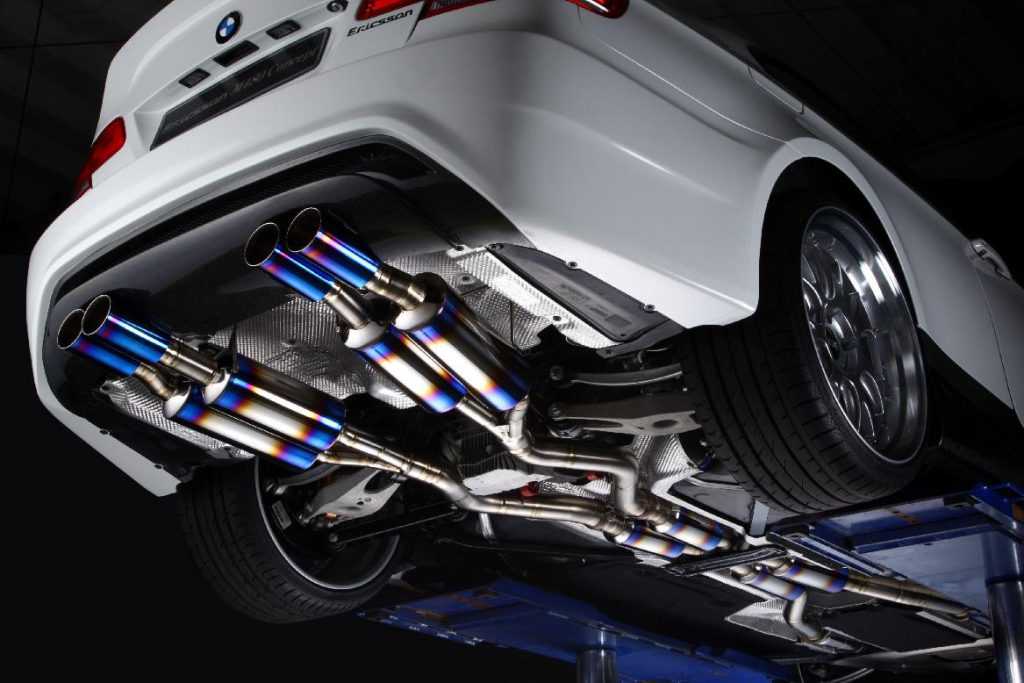
5. Fuel Vapor
If your vehicle has a carburetor instead of a fuel injection, you can be sure of a poor catalytic converter by doing the fuel vapor test. Remove the air cleaner and ask an assistant to flash a torchlight near the carburetor intake.
Rev the engine and see if there’s a cloud of vaporized fuel over the carburetor. If this is the case, you can assume without a trace of doubt that your car’s catalytic converter has a clog.
6. Increased Emissions
Increasing emissions is one of the symptoms of a bad catalytic converter you should notice. When a converter is failing, it can’t do its job properly, which is to reduce gaseous emission.
So, a high level of carbon emission is the obvious consequence of a bad exhaust system. The effects of a catalytic converter are the damage of the entire exhaust system if you don’t fix it quickly.
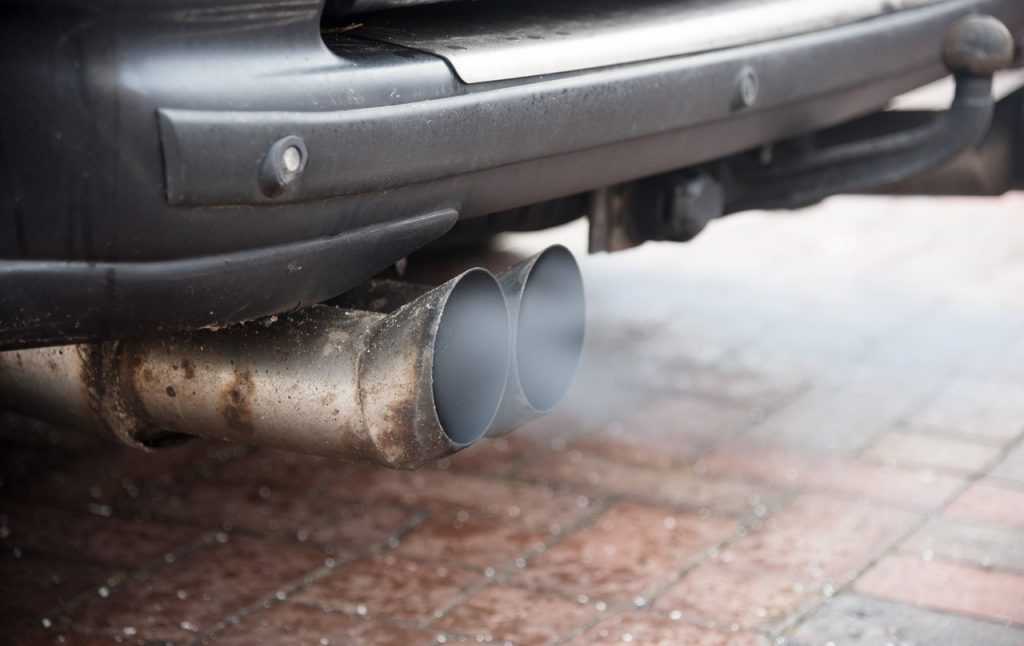
7. Stolen Catalytic Converter
Catalytic converters are frequently stolen due to the precious metals inside. Converters contain small amounts of platinum, rhodium and palladium, all of which have value for metal dealers.
8. Catalytic Converter Need Regular Maintained
Further small bad catalytic converter symptoms are reduced acceleration, sluggish engine performance, excessive heat under the vehicle, dark exhaust smoke, and the smell of sulfur or rotten eggs from the exhaust.
Some of those symptoms can also result from other defective parts of the emissions system, so it’s important to get a mechanic diagnosed when it’s time to replace your catalytic converter.
Keeping your exhaust, emissions, and combustion systems in good shape will minimize the risk of your catalytic converter failing before its due to breaking down – often 10 years or more.
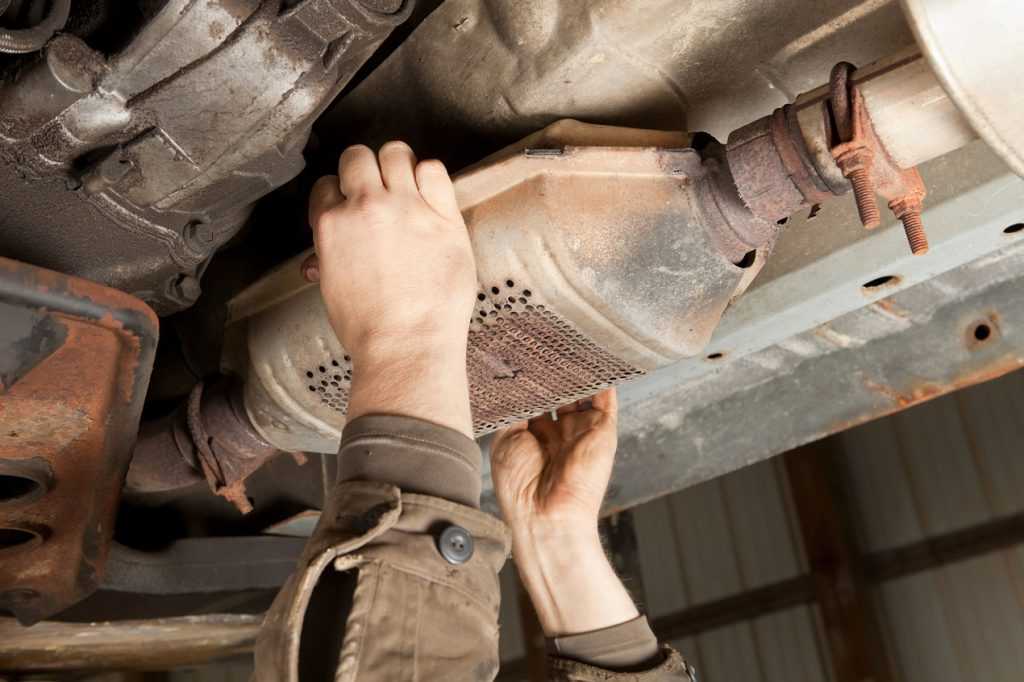
Driving With A Bad Catalytic Converter: Yes or No
If your beloved car is showing catalytic converter problems, you may wonder ‘can I drive a car with a bad catalytic converter’ or ‘how long can I drive with bad catalytic converter’. Here is the answer for you.
A Bad Catalytic Converter Can Be Driven Indefinitely
Driving with catalytic converter failure symptoms is not too dangerous and you can still drive your car as usual. However, you will see there is a drop in the performance of the catalytic converter.
In case the catalytic converter is plugged, it will prevent you from running your vehicle. In some situations, the catalytic converter might come to be completely fused directly or over time, then you need to replace it immediately.
A car with these failing symptoms can be driven indefinitely and doesn’t hurt much depending upon your drive and the severity of your issue.
If your catalytic converter is slightly bad and the only destinations you ride to are close by, it is probably not a disaster for you, and you don’t need to rush and get it replaced or get it unclogged.
A Bad Catalytic Converter Can Burn Through Overtime
The inner fiber of your catalytic converter may be burned through if the car engine is running or burning oil too much. It doesn’t matter if you still drive your car as far as you want, but you will observe a smell and some smoke.
What To Do If You Think You Have a Faulty Catalytic Converter?
Unfortunately, you cannot repair a faulty catalytic converter. Replace it sooner rather than later to avoid contributing to air pollution, and to avoid potential collateral damage to your engine and exhaust system.
You can replace it at a trustworthy mechanic or garage. They are the best places to do so.
Want to learn how to tell if you need a new catalytic converter in your car? Check out this video of Scotty Kilmer.
How Do You Unclog a Catalytic Converter?
There is an array of products and methods that claim to unclog a clogged-up catalytic converter. And while some of these approaches may work, many of them will not. The only foolproof way to address the problem of a clogged catalytic converter is to replace it with a new one.
How Much Does It Cost To Replace A Bad Catalytic Converter
Replacing a catalytic converter isn’t cheap. By one estimate, most replacements will cost between $1,300 and $1,600. Exactly how much the job costs will depend on many factors, including the type of vehicle you have.

Should you decide to tackle the job yourself, expect to pay anywhere from approximately $100 to over $1,000 for a replacement catalytic converter. Once again, exactly how much the part may cost will depend on many factors, including the type of vehicle you have.
Sometimes, you’ll find universal catalytic converters that are relatively inexpensive. The problem is, typically, those components have to be welded or clamped into place, and that makes replacement a lot more difficult.
A better option? Be diligent about preventive maintenance. Keep your exhaust system clean and well-maintained so you can avoid catalytic converter problems in the first place.
Conclusion
Most bad catalytic converter symptoms do not affect the function of your vehicle. But if you have to face a fully plugged catalytic, keep driving your car is the thing you have to avoid.
In some countries, it is illegal to drive a car with a damaged catalytic converter since smog from your car will cause many bad impacts on the environment. Thus, getting your car a new catalytic converter is what you need to do in this case.

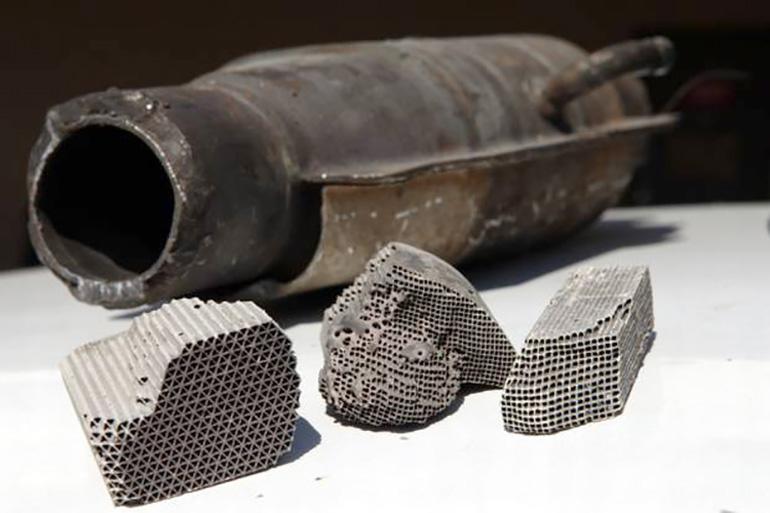


I took out my converter out my car and the check light is on the car is a 2011 Mazda Familia I also got the light cleared and it came back what should I do I need replace it back .
I too removed mine after clogging and the vehicle regained its power and rev sound.
I also have the same problem. It was removed by my mechanic but the check engine light is now on. I also need help on what I should do next
I have a Honda fit and its very low,some one sagested i fit spacers but,insurance policy does not cover that.If i go through broad corrugation its scratched under belly,what should i do?.
Modern cars are designed to have a catalytic converter installed and working to reduce air pollution. When the converter fails or is removed, the engine no longer operates the way it was designed. Engine sensors react to the change and the check engine light triggers. You may or may not care about air pollution, but the correct solution to turning off engine lights and restoring full performance is to have a working catalytic converter installed.
Mechanics suggest we remove and mine was removed and the car regained its power
I remove my car nissan ad van but still over heating..
I removed my nissan ad van coz power and over heating but power is ok but still over heating..
i hav a 2004 Toyota vios..wen engine is switched off there is a sound heard.somewat like ” tik tik tik”.somwea in da exhaust pipe…wat can i do
Now get me a catalytic converter for a 2010 Peugeot 308sw
My car does not have catalyst when my mechanic open it. Does it mean it will consume more fuel?
In my country people are allowed to drive car without catalyst
Hi guys l have a 2014 chery fulwin2 . l opend its catalytic convertor and washed it up by thiner 20000 .now l ‘m sure my engine can breathe well.
Can a bad catalytic converter cause a code P1273 on a Nissan altima 2.5 s?
very useful for me. thanks for sharing this article with us! and all the best for future.
Really a question… My Acura TL cat is defiantly bad. It’s a bolt on not well. Would it be a good idea to have a cat welded on to replace the bad one. Or will that effect the integrity or whatever of the actual car n what that part affects?
What does this mean (Quoted from your article)?: “Also, you will see the similar signs when there is a very rich fuel mixture in the oil tank.” What oil tank, and why/how would it have any fuel in it?
I want to buy a DPF for a Nissan caravan 2015 model, how much?
Hello glenroy , How did you solve the issue faced. Would you recommend one to remove after the experience you went through?
Actually, a bad catalytic converter (original one from Ford could not handle the heat/flow/etc) that melted on my supercharged forced air 2017 Mustang GT caused one side of my engine to overheat and resulted in an engine error code of cam shaft position error. This caused a rough idle where my car would vibrate more than normal while at idle RPM. The dealer replaced the engine, but the bad catalytic converter was still left in my car. Now, I need to replace it with a ‘high flow’ aftermarket catalytic model or just get rid of it by having it cut out and replaced with just a pipe (~$700 for getting rid of it and ~$3000 for upgrading it). Then have my car ‘re-tuned’ to compensate for the difference in air flow/pressure. If I get rid of it, the smell and sound would change dramatically (in a bad way from what I’ve read), so I’m considering the $3000 Kooks long tube system with cats.
Hey, I have a 2013 JX35 Infiniti that they say I need to replace my catalytic converters to the time of $2200. Is it possible that it is just CLOGGED, and can I use the catalytic cleaner to see if that will work?
My 02 VW Jetta is in a no start condition it turns over but doesnt start. 3 months prior to it killing and never starting again it was running crappy, check engine light would be solid when it seemed to be performing right and at times the light would blink and it would lack power drastically. the reader gave me p0300 code random misfire… I I know i should have had it diagnosed but I didnt. this is what i experienced and I pray you can give me some advise. When it started acting up i changed the spark plugs, fuel regulator and fuel filter, it seemed better but then acted up again. On the day that it died- it turned over but didnt start I replaced the fuel pump, no start. I noticed that there was a crack in the coil pack, changed, no start. they were used parts so I changed them again, no start. I found no spark, changed the ECM, same codes, no start. I changed the position sensor, no start. I was told it was probably a compression issue so being I cant afford that kind of fix I gave up so it still sits outside. Heres the question: could I have went through all this crap for a clogged CAT?
Probably a bad CPS in my experience this is the usual culprit with crank, but no start issues